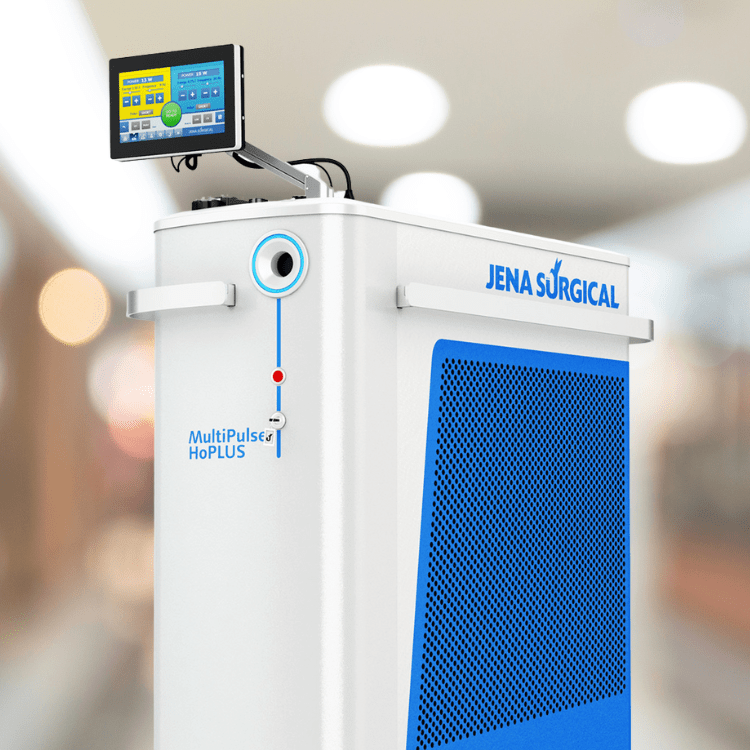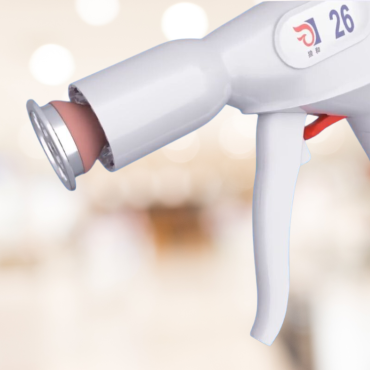
PVP Laser prostatectomy
Laser prostatectomy is a unique and simple method for treating enlarged prostate glands. It combines the effectiveness of standard surgery with safe laser methods.
PVP laser prostatectomy (Photo-Selective Vaporization of the Prostate) has been approved by the US Food and Drug Administration (FDA) since May 2001. It has since become popular worldwide, both in the United States and Europe. The treatment is accepted and paid for by most state health insurance systems or insurance companies.
This method has become more accepted in Asia, especially in China and Korea, and has continued to Thailand. LASER PVP is a new innovation in prostate surgery techniques that uses the principle of minimal invasiveness. It was researched and developed by researchers from Laserscope, Mayo Clinic, and other institutions around the world. This method uses a KTP laser with a frequency of 532 nanometers and green light, which has the special property of providing very high heat energy, causing the evaporation of obstructive prostate tissue. Without causing tissue necrosis and irritation like other laser systems or TURP. Importantly, this method has very little blood loss. Therefore, it is considered a gentle, effective, safe, painless, short hospital stay, and short recovery. This method was first used in Thailand in July 2003, the first time in Asia. Due to its effectiveness, safety, and convenience, it has become increasingly popular. Currently, this method is used in both government and private hospitals.
Doctors often recommend PVP surgery for patients with abnormal symptoms related to the urinary tract caused by prostate enlargement, such as:
- Unable to urinate
- Bleeding from the urethra
- Kidney failure due to accumulation of urine due to obstruction
- Urinary tract inflammation and infection
- Bladder stones
However, if the patient has other symptoms, such as slow urination, frequent urination, or urinating more than 2 times per night, the doctor will consider whether to undergo surgery or not.
Who should undergo PVP prostate surgery?
Who should undergo this treatment? Male patients with moderate to severe symptoms, such as bladder obstruction caused by prostate enlargement.
Patients with a total prostate size of more than 250 cc should not undergo this surgery. Other surgical techniques may be used, and the doctor will consider the appropriate treatment method for each patient.
Prostate PVP Surgery
In the United States, prostate surgery can be performed as an outpatient treatment under local anesthesia, saving time and recovery time for patients, which would be expensive. Patients can return home without having to stay overnight in the hospital. In Thailand, patients will be given a spinal block by an anesthesiologist, protected from germs, and prepared in a supine position.
The PVP method uses a specially designed light guide through a camera to look into the bladder and display images on a video screen. The position for breaking up the enlarged prostate is determined with a KTP laser with a heat power of 120-180 watts, released from the side. At the tip of the light guide, small bubbles (Bubbles) will be observed in the area of tissue blocking the urinary tract. They will be irradiated by the laser, causing them to gradually evaporate and disappear, becoming soft, yellowish-white tissue. Normally, there is almost no bleeding, while helping to open the urethra outlet better.
Which has a good treatment result Similar to the traditional method, TURP has fewer side effects. The duration of the operation depends on the size of the enlarged prostate. The average size is 30 grams, approximately 30 minutes. After the operation, the patient will have a urinary catheter inserted for 1 night without the need for a continuous irrigation system. The patient will be removed the next day and allowed to urinate on their own. Urination symptoms should improve and stop quickly. Urination is smooth.
Treatment steps
The patient may receive local anesthesia, spinal anesthesia, or general anesthesia. During the operation, the doctor will use an endoscope to shine a laser on the prostate to dissolve excess tissue. The operation takes about 20-50 minutes, but if the prostate is very large, the operation may take longer.
After the operation, some patients may need to have a urinary catheter inserted for 24 hours. However, in cases where the prostate is very large, the catheter may need to be inserted for several days.
- Categories
- Men's Specialty





